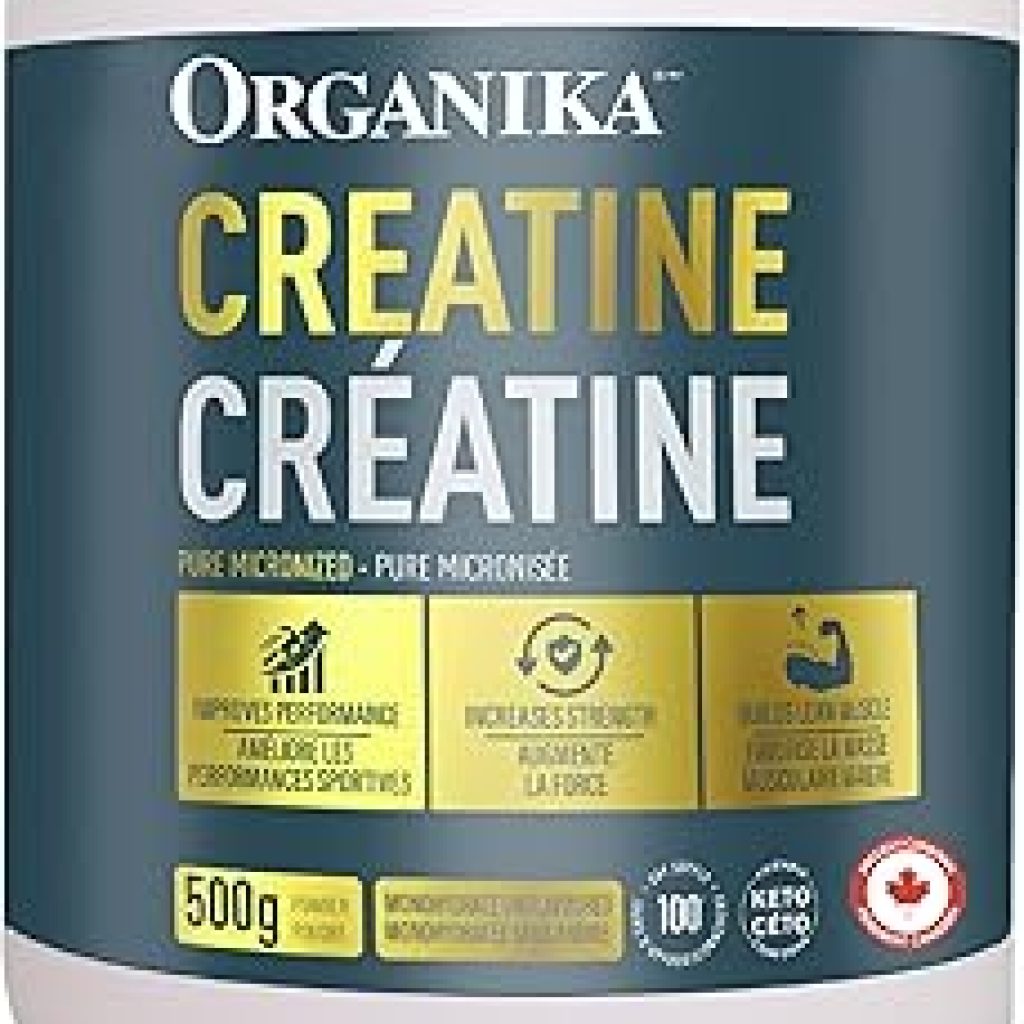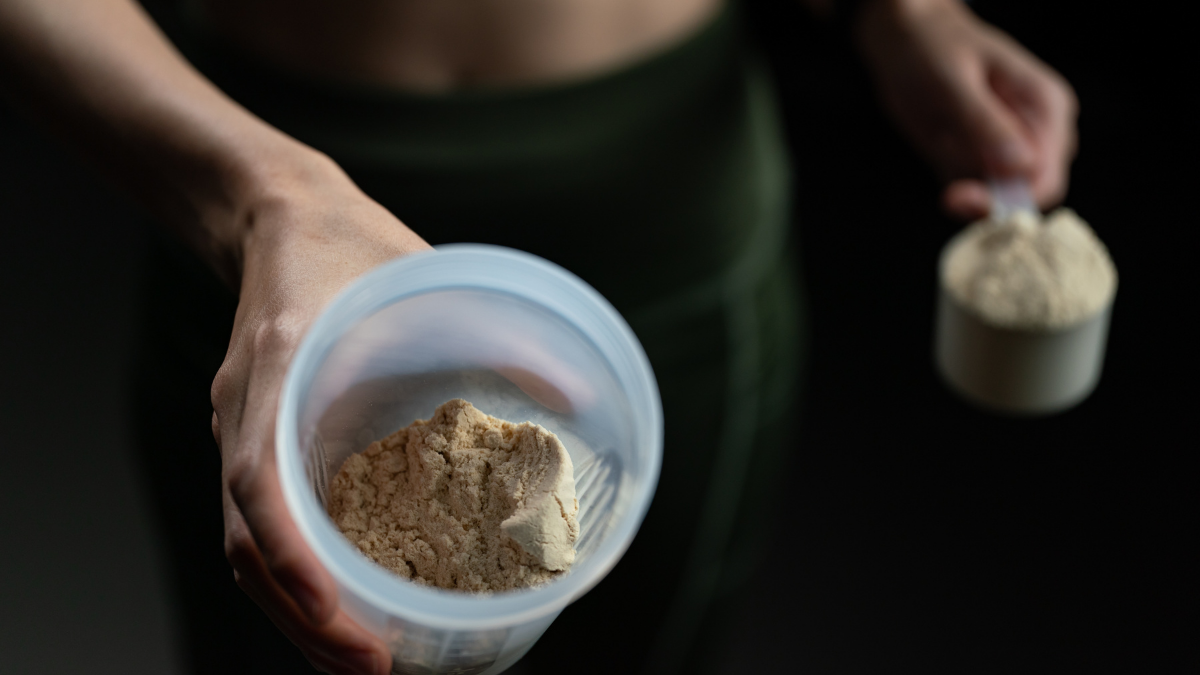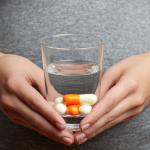Summary
Historically marketed as a muscle-builder for men, creatine is now gaining attention as a powerful supplement for women’s health—especially during menopause. Women have significantly lower creatine stores than men - especially when estrogen drops at menopause - which may impact muscle, bone, and brain health. Research shows that creatine can support strength, cognition, mood, and recovery when paired with resistance training. Safe and affordable, creatine monohydrate may be one of the most underused tools for aging well.
When you buy through our links, we may earn a commission. Learn More.
Once relegated to the realm of bodybuilders and athletes, creatine is stepping out of the gym and into the broader health conversation. This naturally occurring compound, long associated with muscle gain, is now gaining recognition for its vital roles in brain function, bone health, cellular energy, and healthy aging.
Research is increasingly showing that supplementing with creatine isn’t just for high-performance training—it can support cognitive performance, help preserve muscle mass as we age, and bolster our body’s energy systems during stress and illness.
Despite its proven safety and benefits, creatine remains one of the most underused supplements—especially among women, who have 70-80% less of it in their bodies than men.
And that matters.
As science continues to unravel the many ways creatine supports whole-body health, it’s becoming clear that women—particularly during perimenopause and post menopause—may have the most to gain.
And it’s right here in Canada that researchers at the University of Regina are leading the way in uncovering creatine’s potential for women’s health. Dr. Paul Chilibeck—one of Canada’s most respected clinical researchers in healthy aging and co-founder of the world’s largest randomized controlled trial on creatine and exercise in postmenopausal women—explains the study results: “While we saw some benefits on bone improvements with older men, it was postmenopausal women who saw the most dramatic improvements. We knew this was where we needed to dedicate our research.”
But First, What is Creatine?
Creatine is a naturally occurring compound made in your liver, kidneys, and pancreas, with about half coming from dietary sources such as found in foods like red meat and seafood. Most of the creatine in your body is stored in your muscles, where it helps produce energy during high-intensity physical activity, with a small amount also present in the brain.
While it’s often marketed to male athletes and bodybuilders, creatine plays a much bigger role than bulking up — and its benefits for women, especially as we age, are gaining attention.
How Does It Work?
Creatine helps replenish a molecule called ATP (adenosine triphosphate), your body’s primary energy currency. During any physical effort — playing your favourite sport, lifting groceries, going for a brisk walk, or climbing stairs — your muscles rely on ATP. Hundreds of studies over the years have demonstrated that creatine helps regenerate ATP faster, which translates to more strength, stamina, and quicker recovery.
But it’s not just for muscles. Emerging research suggests that creatine may help with mental clarity, memory, and mood — especially when estrogen levels drop during perimenopause and menopause.
It may also support all-important bone health by enhancing the effects of resistance training, which is crucial for women at risk of osteoporosis. In other words, creatine doesn’t just help you move better — it may help you think and age better, too.
Benefits of Creatine for Women
Professor Darren Candow, co-author of the University of Regina study, explained to Discourse Research Magazine, “It’s really quite groundbreaking and has huge implications for postmenopausal women who typically suffer hip and other bone fractures as they age. In Canada alone, hip replacement surgeries and accompanying rehabilitation efforts cost our medical system $800 million annually. Creatine, when combined with exercise, is now something we can safely offer older women to help preserve bone strength, which may help prevent these fractures from happening in the first place.”
Listen to Professor Candow on CBC’s The Dose explain the science behind creatine’s effect on muscles and bones, and why supplements could also help with mental stress.
It’s no surprise that as more women enter perimenopause and menopause—stages marked by bone vulnerability, muscle decline and cognitive fog—the spotlight is turning toward this previously overlooked molecule.
Here are the ways in which creatine is now thought to help women in mid-life and beyond:
🔸 Muscle Mass and Strength
After 30, women start to lose muscle mass — and that loss accelerates during and after menopause. Creatine, combined with strength training, can help preserve and even rebuild lean muscle. It’s important to note that numerous studies indicate that creatine alone, without a corresponding strength training program is unlikely to produce noticeable gains in muscle mass, strength or exercise performance.
🔸 Bone Health
Approximately one in three women in Canada will experience an osteoporotic fracture during their lifetime, according to Osteoporosis Canada. Creatine can improve bone health by influencing bone cell activity, reducing the metabolic activity of osteoclasts (bone resorption) and increasing the activity of osteoblasts (bone-building cells) – but only when combined with resistance training.
Additionally, since muscle mass is a strong predictor of bone mass with aging, the increase in muscle from creatine supplementation and resistance training may improve bone health.
🔸 Brain Health
Studies suggest that creatine supplementation may improve cognitive performance, memory, and mental fatigue — particularly during stress or sleep deprivation. This is especially helpful during hormonal transitions like perimenopause.
🔸 Exercise Recovery
Creatine can help reduce post-workout soreness and supports quicker recovery — which means you can stay consistent with physical activity, even as your body changes.
🔸 Mood Benefits
Some small studies suggest creatine may support serotonin levels and help manage symptoms of depression — particularly in women with low estrogen.

Organika Canadian-Made Creatine Powder– Pure Micronized Creatine Monohydrate. A BC based, family owned and operated company for over 34 years. Proudly Canadian-made and manufactured in a GMP-certified facility and meticulously tested for purity and potency, delivering trusted quality and safety.
Potential Drawbacks and Side Effects of Using Creatine
- Water retention: Creatine pulls water into your muscles, which may cause mild bloating or weight gain (usually 1–3 pounds).
- Stomach upset: Taking too much at once can cause cramping or digestive issues.
- Kidney concerns: While past concerns about kidney damage persist, studies in healthy people using recommended doses show no harm. However, those with pre-existing kidney disease should avoid creatine unless advised by a doctor.
Who Should Not Use Creatine?
- Individuals with kidney disease or impaired kidney function unless under medical supervision
- Those with certain neuromuscular conditions unless prescribed by a healthcare provider
- Anyone taking medications that affect kidney function (e.g., NSAIDs or certain diuretics) without first consulting a doctor
How is Creatine Taken and What Form is Best?
Creatine monohydrate is the most well-researched, effective, and affordable form. It usually comes as a tasteless powder that can be mixed into water, smoothies, or other drinks. Be aware that consuming creatine and caffeine together, especially in large doses, may cause stomach cramps, diarrhea, or other digestive issues in some individuals. Additionally, combining with coffee may reduce the efficacy of creatine.
It’s commonly available in both powder and pill form. While both powder and pill forms of creatine are effective, creatine powder, particularly micronized creatine, may offer better bioavailability and faster absorption due to its smaller particle size and quicker dissolution in liquids. However, for creatine monohydrate, bioavailability is high (over 95%) regardless of whether it’s in powder or pill form when taken with adequate hydration.
What to Look For in a Creatine Powder
- ✔️ Creatine monohydrate as the primary ingredient
- ✔️ Third-party tested (NSF Certified for Sport or Informed Sport)
- ✔️ Micronized creatine for better mixing and absorption
- ✔️ Pure formula with minimal additives or fillers
Recommended Dose
- 💊 3 to 5 grams per day
- 🕒 Can be taken anytime — many prefer post-workout
- ⚡ Loading phase (optional): 20g/day for 5–7 days
- ✅ Safe for long-term use in healthy individuals
Pure, tested ad certified creatine is safe for daily, long-term use in healthy individuals. There’s no need to cycle on and off.
Creatine is one of the most well-studied and widely recommended supplements with growing evidence that it can help women stay strong, sharp, and energized as they transition through life’s stages. A powerful supplement to be sure, when paired with resistance exercise.
Whether you’re navigating perimenopause, protecting your bones post menopause, or just want to age powerfully, creatine may be the quiet ally your health routine is missing.
~ Read more from The Health Insider ~
- Canada Authorizes First-Ever Oral Treatment for Postpartum DepressionCanada approves ZURZUVAE, the first oral PPD pill. This breakthrough 14-day oral therapy aims to elevate the standard of maternal mental health care.
- A New Fit for Health: The Smart Bra Aiming to Revolutionize Breast Cancer DetectionMeet Dr. Van Houten’s smart bra: a low-cost, comfortable, no-x-ray system that detects cancer by monitoring breast tissue movement and stiffness.
- From Mammograms to Smart Bras: Transforming Breast Cancer Detection in CanadaBeyond mammograms: new tools and research are reshaping breast cancer detection in Canada, with equity and precision in mind.
- The New Era of Menopause Care: What’s Changing for Canadian WomenIn this interview, Dr. Amy Louis Bayliss reveals how menopause is an opportunity to take charge of your health and shares her decade by decade action plan. Dr. Amy also shares how new Ontario standards will ensure more doctors discuss menopause care proactively.
- Why Alzheimer’s Hits Women Harder: A Q+A with Dr. Natasha RajahWomen make up the majority of Alzheimer’s patients. Dr. Rajah breaks down the science behind this gender gap and what it means for treatment.
- Tylenol and Pregnancy: Sorting Science from Scare HeadlinesTylenol remains the safest option for fever and pain in pregnancy, says Canada’s top OB-GYN group.
The information provided on TheHealthInsider.ca is for educational purposes only and does not substitute for professional medical advice. TheHealthInsider.ca advises consulting a medical professional or healthcare provider when seeking medical advice, diagnoses, or treatment. To read about our editorial process, click here.
















